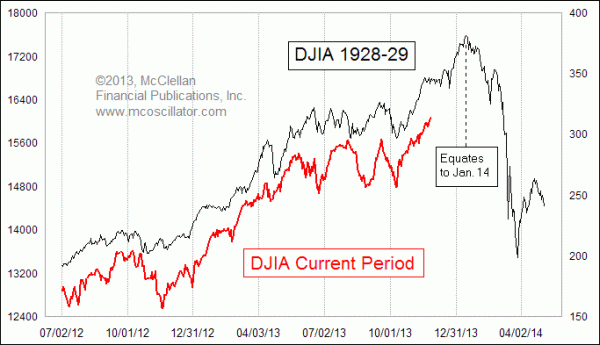Exhibit #1. The current recovery, if we are still in one, is the
6th longest since 1913. Most boom-bust cycles are shorter.
Exhibit #2. The stock market clearly topped out on Nov. 27, and will be facing a 5% correction (down to 15,300) at a minimum. The stock market is a leading indicator of economic performance. The Dow was at 13391 on 1/3/2013, and grew 20.2% through 11/27/2013. Even if the stock market does not crash now, there is no way it will grow another 20% in 2014.
Exhibit #3. NYSE Margin Debt reached an
all-time high in October, and will almost certainly decline from there. And one it starts going down, it tends to keep going down. You know, margin calls. This is usually a leading indicator of the stock market, but in this case the stock market is crashing first. The November figures will be out after Christmas.
Exhibit #4.
New Orders keep declining. Not by much, but the trend is clear. This is the strongest signal.
Exhibit #5. Extended unemployment benefits for 1.3 million people will expire on Dec. 28. This will have the effect of reducing the unemployment rate (ironically because people who don't get unemployment benefits are no longer considered to be unemployed). These people probably won't be spending as much next year.
Exhibit #6. TCMDO, will still increasing, is
increasing at a declining rate. When the growth slope turns negative, this indicates a recession.
Exhibit #7. The Fed is likely to Taper by at least $5 billion per month at their meeting next week. The uncertainty over the budget is over, so they don't have that excuse to continue. While QE is essentially meaningless and doesn't anything, this will spook the investors, as if they need any more reasons.
Exhibit #8. M2 less Base keeps dropping. Plus M2 Velocity keeps dropping. If a growing economy needs a growing money supply, what does a shrinking money supply indicate? Now note that M2 including base kept growing until about Nov 1 and has been flat or declined slightly since then. So obviously the private sector is shrinking or at least deleveraging. But the public sector isn't expanding fast enough to fill the gap.
Put a fork in the economy, it's done. The Keynesians would say we need more stimulus. But I say, let it go. Sell, sell, sell!
Update:
Initial claims for unemployment increased. "
In the week ending December 7, the advance figure for seasonally adjusted initial claims was 368,000, an increase of 68,000 from the previous week's revised figure of 300,000. The 4-week moving average was 328,750, an increase of 6,000 from the previous week's revised average of 322,750." http://www.dol.gov/opa/media/press/eta/ui/current.htm
WLI declines. "
A measure of future U.S. economic growth edged lower last week, while the annualized growth rate also slowed, a research group said on Friday. The Economic Cycle Research Institute, a New York-based independent forecasting group, said its Weekly Leading Index fell to 131.4 in the week ended Dec. 6 from a revised 132.7 the previous week, which originally had been reported as 132.8." http://www.businesscycle.com/ecri-news-events/news-details/economic-cycle-research-weekly-leading-drops-3
Update 2: WLI drops again. "
The Economic Cycle Research Institute, a New York-based independent forecasting group, said its Weekly Leading Index eased to 130.9 in the week ended Dec. 13 from a revised 131.3 the previous week. That was originally reported as 131.4."


















